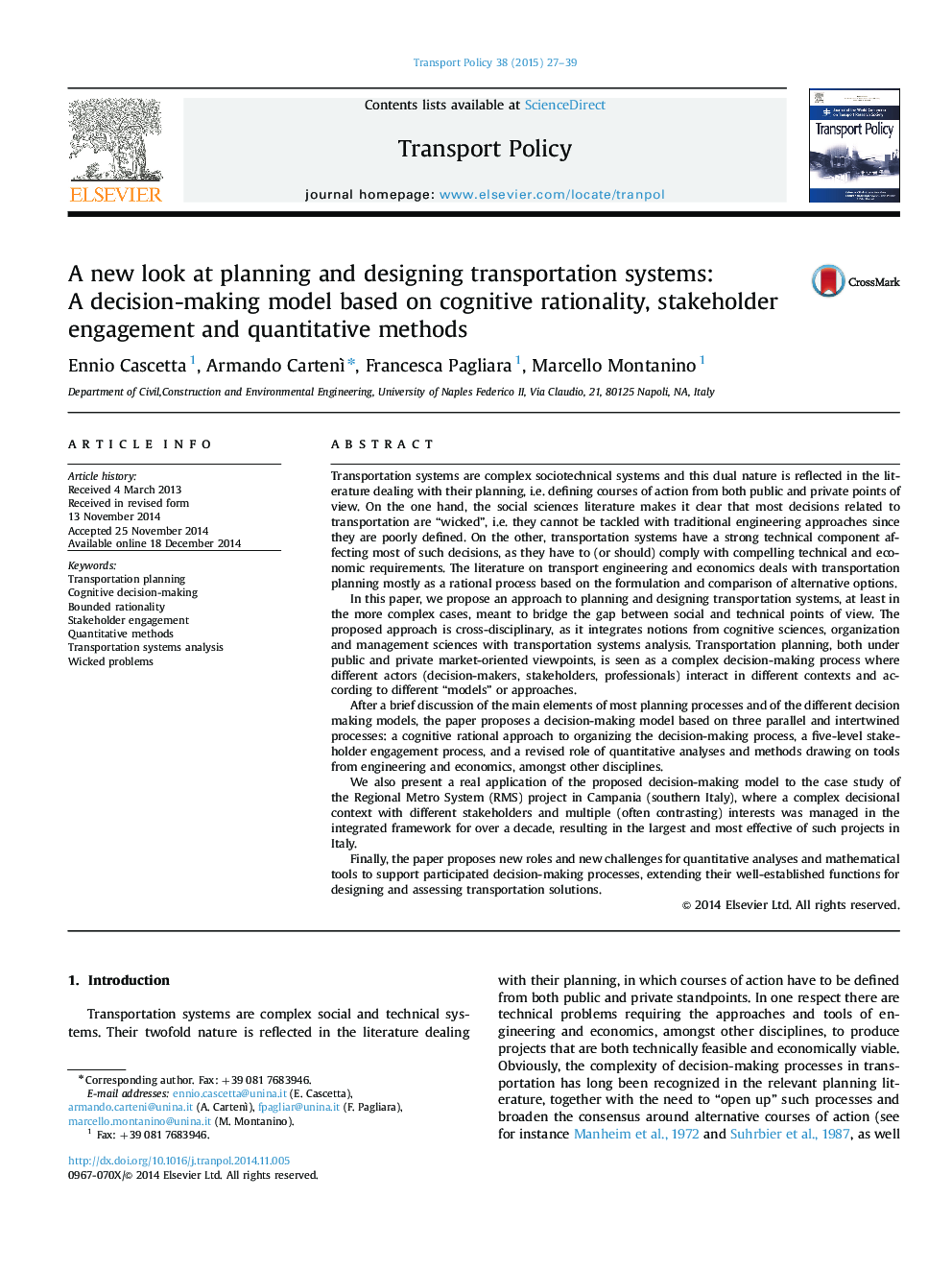| کد مقاله | کد نشریه | سال انتشار | مقاله انگلیسی | نسخه تمام متن |
|---|---|---|---|---|
| 1064991 | 1485839 | 2015 | 13 صفحه PDF | دانلود رایگان |
• Failures in transport-related decision making can be observed in several areas.
• The quality of the decision-making process is a key factor for successful planning.
• A novel decision-making model to tackle “wicked” problems in transportation planning.
• The application of the Regional Metro System project in Campania (Italy) is presented.
• New roles of quantitative methods and technical analyses are discussed.
Transportation systems are complex sociotechnical systems and this dual nature is reflected in the literature dealing with their planning, i.e. defining courses of action from both public and private points of view. On the one hand, the social sciences literature makes it clear that most decisions related to transportation are “wicked”, i.e. they cannot be tackled with traditional engineering approaches since they are poorly defined. On the other, transportation systems have a strong technical component affecting most of such decisions, as they have to (or should) comply with compelling technical and economic requirements. The literature on transport engineering and economics deals with transportation planning mostly as a rational process based on the formulation and comparison of alternative options.In this paper, we propose an approach to planning and designing transportation systems, at least in the more complex cases, meant to bridge the gap between social and technical points of view. The proposed approach is cross-disciplinary, as it integrates notions from cognitive sciences, organization and management sciences with transportation systems analysis. Transportation planning, both under public and private market-oriented viewpoints, is seen as a complex decision-making process where different actors (decision-makers, stakeholders, professionals) interact in different contexts and according to different “models” or approaches.After a brief discussion of the main elements of most planning processes and of the different decision making models, the paper proposes a decision-making model based on three parallel and intertwined processes: a cognitive rational approach to organizing the decision-making process, a five-level stakeholder engagement process, and a revised role of quantitative analyses and methods drawing on tools from engineering and economics, amongst other disciplines.We also present a real application of the proposed decision-making model to the case study of the Regional Metro System (RMS) project in Campania (southern Italy), where a complex decisional context with different stakeholders and multiple (often contrasting) interests was managed in the integrated framework for over a decade, resulting in the largest and most effective of such projects in Italy.Finally, the paper proposes new roles and new challenges for quantitative analyses and mathematical tools to support participated decision-making processes, extending their well-established functions for designing and assessing transportation solutions.
Journal: Transport Policy - Volume 38, February 2015, Pages 27–39
